EVERYTHING OLD IS NEW AGAIN
Even a cinema neophyte is no doubt aware of the term “French New Wave” (La Nouvelle Vague), which describes a period when French filmmakers, influenced by Italian Neorealism and classic Hollywood cinema, created unprecedented documentary-style movies that veered toward existentialism, individualism, and absurdism. This decade, roughly 1959-1969, also saw the burgeoning movement known as Theatre of the Absurd come into its own; artists who had quite enough of war and conservative thinking squashed classical idealism with a new birth of often abstractive artistic self-expression in both film and theater.
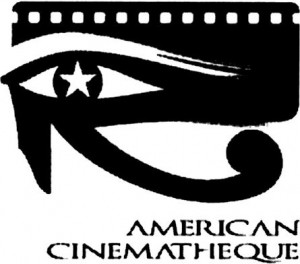 Éric Rohmer (Claire’s Knee), François Truffaut (Jules and Jim), Jacques Demy (The Young Girls of Rochefort), Claude Chabrol (L’enfer), Jean-Luc Godard (Breathless), and Alain Resnais (Night and Fog) were young, bold, and innovative auteurs who stamped their personal style onto each movie they made. Some of these filmmakers began as critics for the film magazine Cahiers du cinéma, so it’s no accident that their newfound popularity—built on youthful audiences—fed a belief that the world and cinema which came before was led by “false gods.” Unfortunately, the byproduct of this animosity towards both classical French cinema and its inherent attributes, such as strong narrative and coherent editing, inadvertently relegated many great films and their creators to an afterthought, or worse, obscurity.
Éric Rohmer (Claire’s Knee), François Truffaut (Jules and Jim), Jacques Demy (The Young Girls of Rochefort), Claude Chabrol (L’enfer), Jean-Luc Godard (Breathless), and Alain Resnais (Night and Fog) were young, bold, and innovative auteurs who stamped their personal style onto each movie they made. Some of these filmmakers began as critics for the film magazine Cahiers du cinéma, so it’s no accident that their newfound popularity—built on youthful audiences—fed a belief that the world and cinema which came before was led by “false gods.” Unfortunately, the byproduct of this animosity towards both classical French cinema and its inherent attributes, such as strong narrative and coherent editing, inadvertently relegated many great films and their creators to an afterthought, or worse, obscurity.
Even undisputed masters such as Max Ophüls remain relatively unknown outside the realm of rabid film lovers and connoisseurs Can you name one other movie from Jean Cocteau besides Beauty and the Beast? When you hear the name Renoir, do you think of the impressionistic painter Pierre-Auguste Renoir instead of his son Jean, who directed Grand Illusion (1937) and The Rules of the Game (1939)?
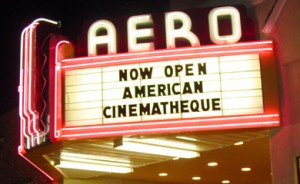 Now is your opportunity to become aquainted with this “old school” cinema. Thank Bruce Goldstein at the Film Forum theater in New York for researching and curating a program entitled French Old Wave. While Film Forum may be screening 53 selections until September 13, the American Cinematheque in Los Angeles has created a four-night program that highlights the ridiculously overlooked era prior to Godard and Truffaut: The French Old Wave, Part I. Here is the line-up (and no excuses from those who may have seen these on DVD; it’s all about the big screen):
Now is your opportunity to become aquainted with this “old school” cinema. Thank Bruce Goldstein at the Film Forum theater in New York for researching and curating a program entitled French Old Wave. While Film Forum may be screening 53 selections until September 13, the American Cinematheque in Los Angeles has created a four-night program that highlights the ridiculously overlooked era prior to Godard and Truffaut: The French Old Wave, Part I. Here is the line-up (and no excuses from those who may have seen these on DVD; it’s all about the big screen):
Aero Theatre • Thursday, September 6 • 7:30pm
Max Ophüls Double Feature: The Earrings of Madame de… and Le Plaisir
These dazzling period melodramas are the perfect introduction to a man who will forever heighten your appreciation of cinematic artistry. It astounds me that features such as tracking shots (like the famous traffic jam sequence in Godard’s Week End (1967) are celebrated as a product of the New Wave’s expressionistic methods, when Ophüls had already delivered the most breathtaking, graceful and balletic tracking shots in all of film. (A side note to lovers of Annie Hall: the documentary The Sorrow and the Pity—which Alvy watches repeatedly—was made by Ophüls’s son Marcel.)
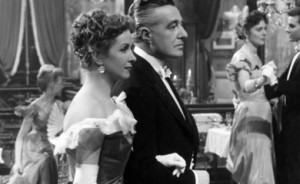 THE EARRINGS OF MADAME DE…
THE EARRINGS OF MADAME DE…
1953, Janus Films, 105 min, in French with English subtitles.
Whether for study, entertainment, or appreciation, this movie demands repeated viewings. I have always recommended this as a “must-see” film, especially on the big screen. From Kevin Thomas: “Director Max Ophüls’ The Earrings of Madame de… is a romantic tragedy at its most sublime, in which the beautiful wife (Danielle Darrieux) of a rich, titled general (Charles Boyer) falls in love with a handsome, equally aristocratic Italian diplomat (Vittorio De Sica) amidst the most opulent Belle Epoque settings. A pair of diamond earrings triggers a chain of events that sets a deceptively light tone for the film.”
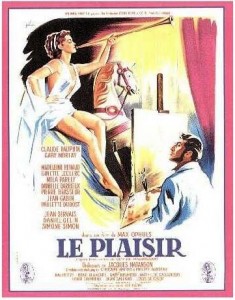 LE PLAISIR
LE PLAISIR
1952, Janus Films, 97 min, in French with English subtitles.
Max Ophuls brings his opulent, glittering style to this triptych of tales by Guy de Maupassant (Le Masque, La Maison Tellier, and Le Modèle) about the ironies, compromises and pleasures of the human condition. Set in an array of richly textured, late 19th-century locales, spanning the bucolic French countryside to the artists’ studios and urban bordellos of Paris. With an all-star French cast including Jean Gabin, Simone Simon and Danielle Darrieux, Le Plaisir (a.k.a. House of Pleasure) was nominated for an Academy Award for Ophüls’ Art Direction; Stanley Kubrick once named it as his favorite film.
Aero Theatre • Fri, September 7 • 7:30pm
French Crime Double Feature: Pépé le Moko and Touchez Pas au Grisbi
Two films starring Jean Gabin. From Nick Pinkerton in The Village Voice: “To say that Gabin was Bogart and Tracy intersecting in a single actor would still not come close to encapsulating the importance of this extraordinary performer as essentially French as the Parisian shrug. In efficient motion, Gabin was at once dainty and solid, brisk yet resigned, not particularly handsome yet capable of breathtaking close-ups.”
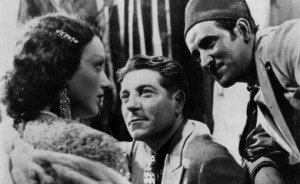 PEPE LE MOKO
PEPE LE MOKO
1937, Rialto Pictures, 94 min, in French with English subtitles.
From director Julien Duvivier, infamous gangster and fugitive Pépé le Moko (Gabin) hides out from women, the law, and fellow criminals in the Casbah of Algiers. He’s safe in the Casbah’s labyrinth until passion (in the form of a lovely Parisian playgirl) tempts him out into the open. This classic of French cinema is an example of the 1930s French movement known as poetic realism, which combines gritty realism with occasional flashes of unusual cinematic tricks. The film is often seen by film historians as an early precursor of film noir, influencing everything from a Warner Bros. cartoon character (Pepe Le Pew) to Casablanca.
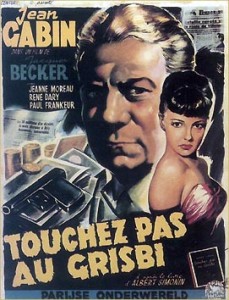 TOUCHEZ PAS AU GRISBI
TOUCHEZ PAS AU GRISBI
1954, Rialto Pictures, 88 min, in French with English subtitles.
Jacques Becker’s crime film, translated as “Don’t Touch the Loot,” has aging gangster Jean Gabin sitting on a fortune in gold from a perfect heist—but sleazeball Lino Ventura decides he wants in on the action, with the help of double-crossing chorus girl Jeanne Moreau. This exquisite noir was passed over by the Cannes Film Festival because “it gave the wrong idea of French cinema,” yet it went on to become a huge hit and inspired a wave of crack crime films like Bob Le Flambeur.
Aero Theatre • Sat, September 8 • 7:30pm
French horror-suspense double feature: Diabolique and Eyes Without A Face
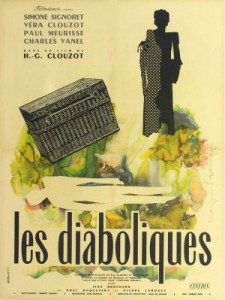 DIABOLIQUE
DIABOLIQUE
1955, Janus Films, 110 min, in French with English subtitles.
One of the greatest psychological thrillers ever made, Henri-Georges Clouzot’s film focuses on the browbeaten wife (Vera Clouzot) of a brutal schoolmaster and his tough-as-nails mistress (Simone Signoret) as they team up to murder their mutual tormentor. But that’s only the beginning of this edge-of-your-seat affair, a twisting, turning shocker that still holds up today as one of the all-time classics of suspense. Legend has it that Clouzot beat Hitchcock to the punch by only an hour in sewing up rights to the original novel by Pierre Boileau. With sardonic Charles Vanel as the poker-faced inspector.
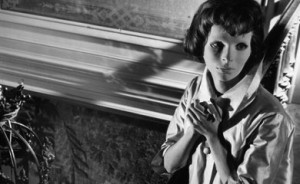 EYES WITHOUT A FACE
EYES WITHOUT A FACE
1959, Rialto Pictures, 88 min, in French with English subtitles.
The London Evening Standard called Georges Franju’s classic horror nightmare “one of the most poetic horror films in the history of cinema.” Originally released in the U.S. as The Horror Chamber of Dr. Faustus, Eyes Without A Face (Les Yeux Sans Visage) is a diabolical chiller about a brilliant scientist who steals the faces of young women to restore his own daughter’s shattered looks. With Pierre Brasseur, Edith Scob and Aida Valli.
Aero Theatre • Sun, September 9 • 7:30pm
Jean Renoir double feature: The Rules of the Game and Boudu Saved From Drowning
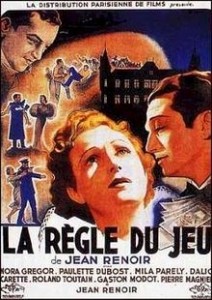 THE RULES OF THE GAME (La Règle Du Jeu)
THE RULES OF THE GAME (La Règle Du Jeu)
1939, Janus Films, 110 min, in French with English subtitles.
Jean Renoir’s seminal upstairs-downstairs portrait is at once a lyrically light comedy of manners and a damning critique of French upper-crust society. A weekend hunting party at the sprawling country home of Marquis Robert de la Cheyniest (Marcel Dalio) proves disastrous as the party’s invitees—and the manor’s waitstaff—harbor secrets from each other, and engage in increasingly messy trysts and tête-à-têtes, set against the background of a lovelorn aviator’s welcome-home celebration. British film monthly Sight & Sound asks an international group of film professionals to vote for their greatest film of all time, and this film, along with Citizen Kane and Vertigo, continually makes the list.
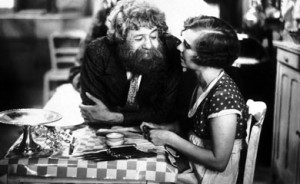 BOUDU SAVED FROM DROWNING (Boudu Suave Des Eaux)
BOUDU SAVED FROM DROWNING (Boudu Suave Des Eaux)
1932, Janus Films, 84 min, in French with English subtitles.
In Jean Renoir’s delightful, moving comedy, Michel Simon plays hirsute Parisian tramp Boudu, who plunges into the Seine only to be saved from suicide by a bourgeois bookseller, Edouard Lestingois (Charles Granval). Edouard takes the hobo under his wing and invites him home as a permanent houseguest, but little does he know that Boudu’s presence will irreparably shake the wealthy, comfortable Lestingois family to its core. The inspiration for Paul Mazursky’s 1986 comedy Down and Out in Beverly Hills.
The French Old Wave, Part I
American Cinematheque at the Aero Theatre in Santa Monica
presented in association with Film Forum, L’Institut Francais, and the Cultural Services of the French Embassy
screening September 6-9, 2012
for tickets and more info, visit http://www.americancinematheque.com/
Film Forum in New York City
series scheduled to end on September 13, 2012
for schedule and tickets, visit http://www.filmforum.org/

